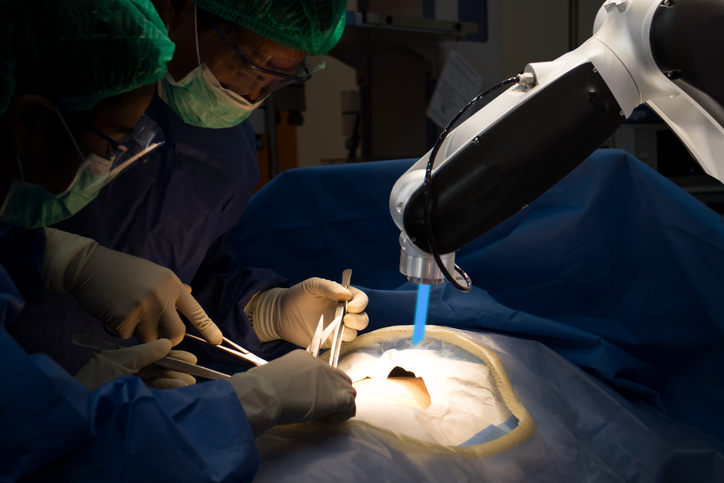
Use of a robotic-arm assistance in surgery may improve patient outcomes in a total knee arthroplasty (TKA), according to a study recently published in The Bone & Joint Journal. In their prospective cohort study, researchers compared 40 patients undergoing traditional jig-based TKA to 40 patients who received robotic-arm assisted TKA to compare postoperative functional outcomes and time spent in hospital. All operations were performed by the same surgeon, using a parapatellar approach and the same implant device, and all patients underwent the same rehabilitation process.
The researchers found that robotic-arm assisted TKA was associated with reduced pain, time spent in hospital, anesthesia usage, hemoglobin loss, and number of physical therapy sessions, as well as improved early functional recovery when compared to traditional TKA.
These profound results were generated using a robotic device called Mako. The initial creator of the technology, Mako Surgical Corporation, was acquired by Stryker in 2013 for $1.65 billion. It is important to note that this robotic-arm itself does not perform the surgery. Used with Stryker’s Triathlon Total Knee implant, the Mako System software pre-plans the surgery, guiding instruments with calculations from pre-operative imaging. The orthopedic surgeon uses the device to remove bone and cartilage, then inserts the knee implant traditionally.
With roughly 800,000 TKA’s being done a year and a predicted 3 million performed yearly by 2030, the surgery is very prevalent in the orthopedic community. To increase the accuracy of this operation with robotic apparatus would not only improve short term patient outcomes but could perhaps reduce reoperation rates and allow younger patients to undergo TKA as well. Most implants last around 10 to 15 years currently, making most patients under 60 not viable candidates for the operation. These patients must often live with their osteoarthritis for years before replacement, managing the condition with injections and physical therapy. With technological improvements such as the robotic-arm assisted TKA, younger patients may be able to receive knee arthroplasty at younger ages.
“We know that the more accurate we can be in positioning implants, the longer the implant will last, and the better the patient’s knee will feel and function,” says Dr. Cedric Ortiguera, orthopedic surgeon at Mayo Clinic. “Our surgeons’ hands and our traditional techniques are accurate to about 97 percent, but with the assistance of a robotic arm, we can improve accuracy to about 99 percent or better.”
Sources: The Bone & Joint Journal, News Network, Stryker, Stryker, DaleyMD







 © 2025 Mashup Media, LLC, a Formedics Property. All Rights Reserved.
© 2025 Mashup Media, LLC, a Formedics Property. All Rights Reserved.